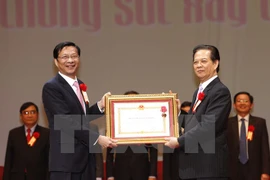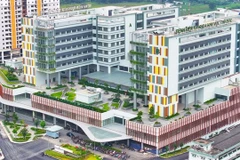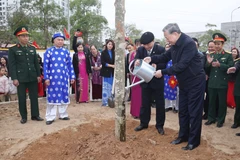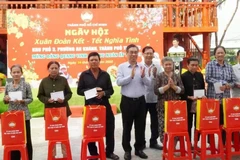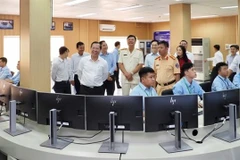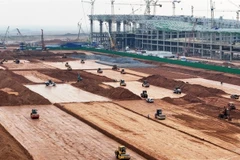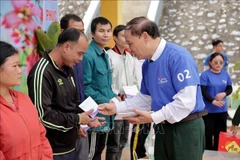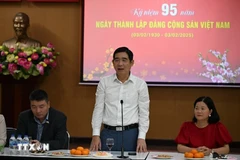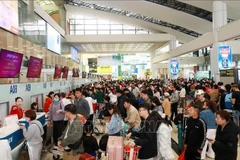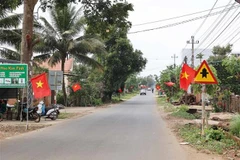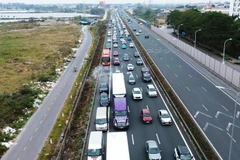Hanoi (VNA) – Infrastructure development appeared as the most outstanding achievement of the national target programme on new-style rural area building in the 2010-2015 period, according to Minister of Agriculture and Rural Development Cao Duc Phat.
Up to 75 percent of local budgets and the majority of financial contributions by the public have been spent on infrastructure, Minister Phat said at a conference in Hanoi on December 8 to review the five-year implementation of the programme.
Better infrastructure has facilitated socio-economic development and increase direct benefits to the population, he noted.
The official cited that 36.4 percent of communes nationwide have fulfilled the criterion of transport, 61.4 percent have met the irrigation criterion, and 82.4 percent have satisfied that of rural electricity.
Most of the localities have devised their own commodity production development plans which are based on their advantages, the minister said, adding that about 22,500 agro-forestry-fishery production models are now active across the country.
Such localities as Hanoi, Ha Nam, Nam Dinh, Ninh Binh and Thanh Hoa have redesigned their transport and irrigation systems to pave the way for the mechanisation of farming work.
Other provinces like Thai Binh, Ha Tinh, An Giang, Hau Giang and Dong Thap have raised the rate of mechanisation in farming from 40-50 percent to 80-90 percent thanks to policies that support farmers in purchasing ploughing, mowing, and drying machines.
About 2,500 large-scale field models were set up in 43 provinces, covering about 556,000 hectares. Many production chain models were also formed in husbandry, aquaculture and forestry.
Vocational training for rural labourers has also born significant outcomes.
Around 56.5 percent of communes have satisfied the criterion of income and 85.5 percent have met that of employment.
Nearly 1.300 communes (14.5 percent) and 11 districts nationwide have been recognised as new-style rural areas to date.
However, Minister Phat admitted that the programme has failed to achieve the target of having 20 percent of communes recognised as new-style rural areas in 2015 as set in Resolution 7 of the Party Central Committee (10 th tenure).
He said production development in combination with agricultural restructuring, building cultural life in residential areas and environmental protection have not yet received due attention.
Additionally, a big gap in outcomes remains between localities and regions, he said, citing the 34 percent and 23.5 percent recorded in the Southeastern and Red River Delta regions, compared with the moderate 7 percent in the northern mountainous and the Central Highlands localities.
During 2015-2020, half of the communes nationwide are projected to meet all the requirements and each province and centrally-run city is expected to have at least one district recognised as new-style rural area. There will be no communes fulfilling fewer than five criteria.
To meet the targets, the minister stressed the need to increase communication work among officials and locals and accelerate production development in combination with agricultural restructuring, along with investment attraction, the application of scientific-technological advances and vocational training.-VNA




